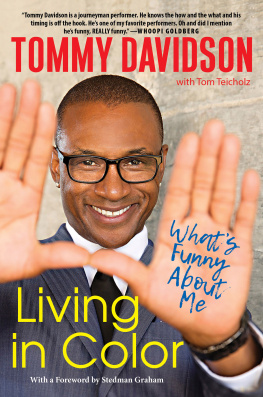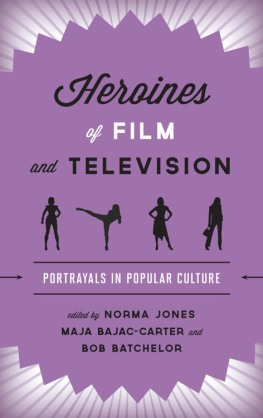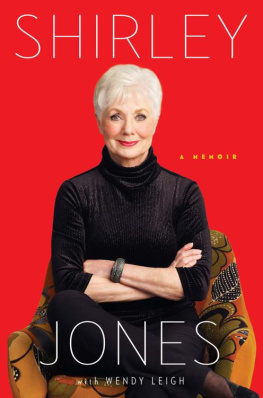YOU HAVE TO STAND FOR SOMETHING,
OR YOULL FALL FOR ANYTHING
If you dont know what your position is, if you dont know where you draw the line between right and wrong, youll never see yourself as you truly are. Youll never see the world as it truly is. Youll never have the confidence or the drive to do what you have to do to make a difference. Youll never feel good about yourself and your place in the world. So thats become my credo.
Stand for something.
And do you know what?
I dont fall for much.
As a young woman I was told (by some man, of course) that I shouldnt rock the boat, that if I waited, good things would come to me. Yeah, right! I chose instead to listen to my mother, who told me that if I wasnt in the boat I should turn it over to make my point. Thats the way I considered the law, thats how I now consider the media, and thats how Ive approached this book.
This edition contains the complete text of the original hardcover edition.
NOT ONE WORD HAS BEEN OMITTED.
YOU HAVE TO STAND FOR SOMETHING, OR YOULL FALL FOR ANYTHING
A Bantam Book
PUBLISHING HISTORY
Bantam hardcover edition published September 1998
Bantam paperback edition / November 1999
Grateful acknowledgment is made for permission to reprint from PROPHET by Kahlil Gibran. Copyright 1923 by Kahlil Gibran a renewed 1951 by Administrators CTA of Kahlil Gibran Estate and G. Gibran. Reprinted by permission of Alfred A. Knopf, Inc.
All rights reserved.
Copyright 1998 by Girlfriend Enterprises, Inc.
Cover photographs copyright 1999 by Andrew Eccles.
Library of Congress Catalog Card Number: 98-30196. No part of this book may be reproduced or transmitted in any for by any means, electronic or mechanical, including photocopying, cording, or by any information storage and retrieval system, with permission in writing from the publisher. For information address: Bantam Books.
ISBN: 0-553-76213-3
eBook ISBN: 978-0-8041-8108-2
Published simultaneously in the United States and Canada
Bantam Books are published by Bantam Books, a division of Random House, Inc. Its trademark, consisting of the words Bantam Book and the portrayal of a rooster, is Registered in U.S. Patent and Trademark Office and in other countries. Marca Registrada. Bantam Book 1540 Broadway, New York, New York 10036.
v3.1
I am the author of the only dictionary that defines me.
Star Jones
Standing Tall
The status quo sits on society like fat on cold chicken soup, and its quite content to be what it is. Unless someone comes along to stir things up there just wont be change.
ABBIE HOFFMAN
SOMETIMES IT TAKES a story about death to teach you about life.
Back when I was working as a legal correspondent for NBC News, I discovered what appeared to be an appalling injustice in Esto, Florida, so I went down with a production crew to check it out.
Esto is a sleepy little town on the panhandle, just south of Dothan, Alabama, another small town. I remember thinking how cool it was to stand with one foot in Florida and another in Alabama at this one place in town, and that, in more ways than one, the region really was a kind of crossroads. I was there to look into the events surrounding the death of a local centenarian named Ada Dupree, whose passing split the town along racial lines in a way that seemed to beg for a spotlight.
Miss Adayoull forgive me, but Im from the South, so every adult southern woman gets a Miss in front of her namewas one hundred and four years old at the time of her death, and one of the most beloved people in Esto. Along with her husband, she was one of the founders of the town, and over the years her good deeds and indomitable spirit came to characterize the community. People came from all over to visit with Miss Ada. She was even mentioned on The Today Show by Willard Scott, on the occasion of her 100th birthday, and she had a collection of good friends that would have filled the spaces between Esto and Dothan.
One of those good friends was Sybil Williams, the wife of the former local mayor. When Miss Sybil was a child, Miss Ada helped raise her, and in adulthood the two women were like sisters. Miss Sybil was in her late seventies at the time I went to meet her, which made her about twenty-five years younger than Miss Ada at the time of her passing, but I suppose at that age the difference in years didnt much matter. What did matter to these women was the bond of love and respect theyd built together, and the shared history of more than half a century.
Well, Miss Sybil was so touched by Miss Adas passing that she made plans to have her buried in the Williams family plot at the Williamss church. It was where Miss Ada wanted to be buriedwith the people she loved, for eternityand it was where Miss Adas own family wanted her to be, as well. They knew the special connection Miss Ada felt for Miss Sybil and her family. The problem with this plan, it turned out, was that Miss Sybil was white, and Miss Ada was black. Some of the white folks in the churchthe same white folks who loved Miss Ada when she was alive, who turned out to celebrate her 100th birthday, who counted themselves among her closest friendsdid not want a black woman buried in their cemetery. Not even Miss Ada. It just wasnt the way things were done in Esto. The message, if you were black, was that it was okay to be the most loved person in the town; it was okay to be a doctor or a lawyer or even the mayor; but it wasnt okay to trespass on the final resting places of your white friends and neighbors. In the final analysis, you werent worthy of the same treatment, the same respect. Well, when I got wind of what was happening I just had to go down and take the pulse of this community for myself. I mean, these were the 1990s. We stood at the gates to a new century. The reports we were hearing in New York were deeply upsetting in the way they suggested a dangerous kind of racism, more troubling than the racism born of ignorance or disassociation. Here you had a black woman who was not only accepted by her neighbors but embraced, and yet even these people couldnt get past the color of her skin.
Before I left for Esto, I called my grandma Pauline down in Badin, North Carolina, just to check on her and my granddaddy Clyde. I told Grandma about the story I was working on, and we talked about it. She was surprised at my surprise, because black folks and white folks werent buried together in Badin either. I was shocked, and started to rant and rave about how we didnt have to take that kind of garbage anymore, but Grandma hushed me and told me to calm my little self down and think about it. Most people want to be buried with their people, she explained. Not their particular race of people, but the people in their family. Now, that I could understand. But what about someone who wanted to be buried somewhere else? Surely we had come that far, but Grandma couldnt say because the subject had never come up in Badin, although if it did she guessed the folks there would react pretty much the way the folks down in Esto reacted to the news of Miss Ada.











